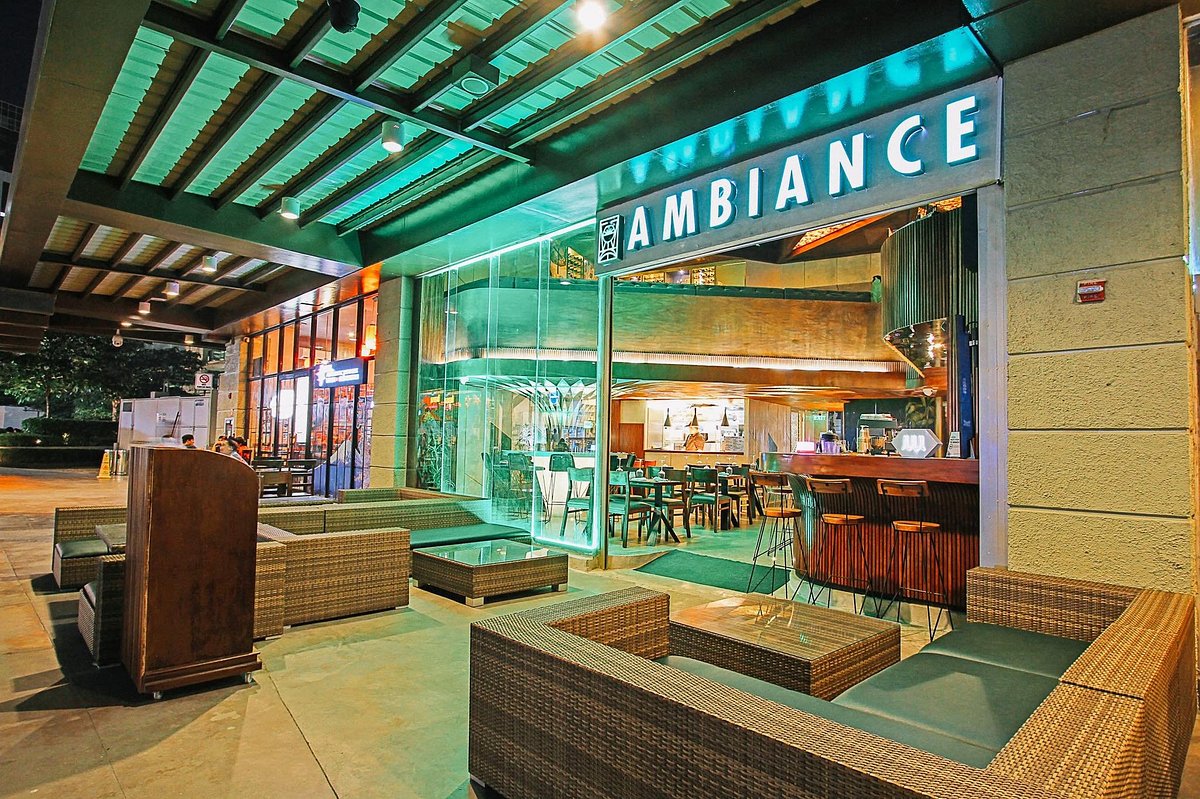Pan Asian Dining Islamabad: Relish Genuine Asian Meals
Pan Asian Dining Islamabad: Relish Genuine Asian Meals
Blog Article
Savor Genuine Oriental Food With a Pan-Asian Spin for a Culinary Adventure
Starting a cooking trip via authentic Asian cuisine, enhanced with a Pan-Asian twist, provides a special possibility to discover the abundant tapestry of tastes that define the region's diverse cooking customs. This experience welcomes you to appreciate the splendid balance of preferences-- pleasant, salty, spicy, and sour-- harmonized by aromatic natural herbs and spices. Imagine the ingenious blend of Thai curry and ramen or the unexpected pleasure of sushi burritos. As you consider these luring recipes, take into consideration the social stories and historic impacts that shape them, each bite offering a tale waiting to be found.

Discovering Pan-Asian Flavors
In the world of global gastronomy, Pan-Asian food sticks out for its amazing variety and the harmonious interaction of flavors from different Eastern cultures. This cooking approach commemorates the rich customs and unique components located throughout the continent, producing a tapestry of tastes that is both satisfying and interesting. Secret to Pan-Asian cuisine is its capability to balance contrasting flavors-- pleasant, salted, spicy, and sour-- while highlighting the quality and high quality of each active ingredient.
From the umami-rich soy sauce of Japan to the fiery chili peppers of Thailand, Pan-Asian cuisine supplies an extensive combination of tastes. These components are typically incorporated in creative ways, enhancing meals with layers of intricacy. As an example, the use of aromatic natural herbs such as lemongrass and cilantro, usual in Vietnamese and Thai cuisine, includes a revitalizing illumination to recipes, while the incorporation of coconut milk supplies a luscious, rich texture.
The emphasis on fresh produce and aromatic spices guarantees that each meal is not only a feast for the taste however likewise for the detects. Pan-Asian food invites diners to embark on a cooking journey, discovering the huge and differed landscapes of Eastern gastronomy with every bite.
Blend Dishes to Try
While Pan-Asian cuisine is commemorated for its typical flavors, the modern-day cooking landscape is increasingly welcoming combination meals that blend these timeless elements with influences from other regions. This cutting-edge strategy not just honors the abundant heritage of Eastern cookeries yet also presents unique taste experiences that attract modern tastes buds.
A prime example of such a combination recipe is the Korean-Mexican taco, where marinated bulgogi beef is covered in a cozy tortilla, topped with kimchi and a spicy gochujang-infused salsa. This combination weds the strong, tasty tastes of Korea with the vivid, fresh elements of Mexican food. Similarly, sushi burritos have obtained popularity, integrating the fragile virtuosity of Japanese sushi with the hearty, hand-held ease of a burrito, typically including fusion active ingredients like tempura shrimp and avocado with a drizzle of wasabi mayo.
Another significant recipe is Thai curry ramen, which infuses the luscious, aromatic flavors of Thai curry into the calming broth of standard Japanese ramen, creating an unified mix that tantalizes the detects. These combination recipes expand beyond plain novelty; they represent a culinary dialogue between cultures, encouraging expedition and technology worldwide of Pan-Asian cuisine.
Vital Components and Flavors
To really appreciate Pan-Asian cuisine, one must understand the important active ingredients and spices that form its foundation. This varied culinary style draws from an abundant tapestry of Oriental customs, employing a harmonious blend of flavors and appearances.
Aromatic components are crucial, with lemongrass, ginger, and garlic being common throughout numerous Find Out More Pan-Asian dishes. These active ingredients offer a fragrant base that boosts the complexity of tastes. Spices such as celebrity anise, cardamom, and cinnamon introduce heat and character, resembling influences from areas like China and India.

Food Preparation Strategies and Tips
Understanding the art of Pan-Asian food requires knowledge with its unique food preparation techniques, each adding to the vibrant tapestry of flavors this culinary custom is commemorated for. Central to these approaches is the stir-fry, a quick cooking method that protects the dietary honesty and dazzling colors of active ingredients. Using a wok, the stir-fry approach enables even warm circulation, necessary for accomplishing the particular appearance and flavor balance of Pan-Asian dishes.
One more fundamental technique is steaming, specifically prevalent in Chinese cuisine. This gentle technique maintains the all-natural tastes and nutrients of components, making it ideal for fish and shellfish and vegetables. Dumplings, a beloved staple, typically gain from steaming, resulting in soft, succulent appearances.
Grilling, likewise integral, passes on smoky midsts to recipes such as Oriental bulgogi or Japanese yakitori (Instagrammable restaurants Islamabad). This method often entails seasoning ingredients, enabling tastes to permeate deeply before cooking over an open fire or warmer
Finally, understanding the art of balancing tastes-- pleasant, sour, salty, bitter, and umami-- review is vital. Effectively layering these aspects can boost a meal from normal to phenomenal, using a complicated and satisfying culinary experience that embodies the significance of Pan-Asian cuisine.
Eating Experiences Worldwide
Throughout the globe, Pan-Asian food supplies an unparalleled eating experience, commemorated for its abundant tapestry of flavors and lively presentations. This cooking phenomenon has transcended social limits, capturing the hearts and palates of food lovers worldwide. In cosmopolitan cities like New York, London, and Sydney, Pan-Asian restaurants function as melting pots where cooking practices from Thailand, Japan, China, and past assemble, offering diners with an eclectic mix of dishes that highlight the area's diversity.
The global appeal of Pan-Asian cuisine depends on linked here its capability to offer both credibility and development. Chefs skillfully marry standard components such as lemongrass, soy sauce, and miso with contemporary techniques, resulting in dishes that are both familiar and refreshingly new. This blend permits diners to start a cooking journey that values heritage while embracing modernity.
Furthermore, dining experiences are elevated via attentively made settings that show the values of Pan-Asian visual appeals. From minimalist Japanese-inspired interiors to vibrant Thai-themed rooms, each restaurant offers an unique atmosphere that matches the culinary offerings. Therefore, patrons are not merely eating a dish however partaking in a social experience, making Pan-Asian dining an absolutely global sensation.
Conclusion
The expedition of Pan-Asian food supplies an extensive understanding of the intricate interaction of flavors and cooking practices across Asia. By accepting fusion recipes such as Thai curry ramen and sushi burritos, the culinary trip not just highlights the versatility of standard active ingredients but additionally showcases ingenious modern methods. This gastronomic adventure, enhanced by cooking approaches and necessary spices, gives an one-of-a-kind chance to appreciate the multiculturalism and culinary artistry that define Pan-Asian food on a global range.
Embarking on a cooking journey via authentic Eastern cuisine, improved with a Pan-Asian twist, offers an unique possibility to explore the abundant tapestry of tastes that define the area's diverse culinary practices.In the realm of international gastronomy, Pan-Asian food stands out for its exceptional diversity and the harmonious interaction of tastes from different Eastern cultures. Trick to Pan-Asian cuisine is its capacity to balance contrasting tastes-- wonderful, salty, spicy, and sour-- while highlighting the quality and high quality of each ingredient.

Report this page